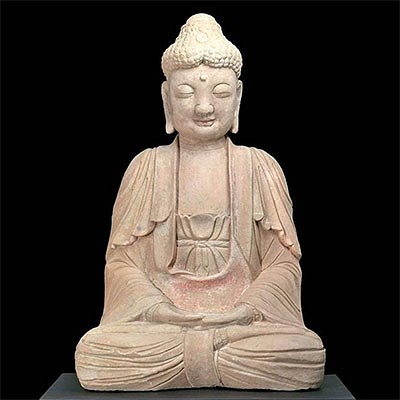1930s Native American Sioux Catlinite Pipe w/ Buffalo
Lot 141
About Seller
Artemis Fine Arts
686 S Taylor Ave, Ste 106
Louisville, CO 80027
United States
Selling antiquities, ancient and ethnographic art online since 1993, Artemis Gallery specializes in Classical Antiquities (Egyptian, Greek, Roman, Near Eastern), Asian, Pre-Columbian, African / Tribal / Oceanographic art. Our extensive inventory includes pottery, stone, metal, wood, glass and textil...Read more
Categories
Estimate:
$4,000 - $6,000
Absentee vs Live bid
Two ways to bid:
- Leave a max absentee bid and the platform will bid on your behalf up to your maximum bid during the live auction.
- Bid live during the auction and your bids will be submitted real-time to the auctioneer.
Bid Increments
| Price | Bid Increment |
|---|---|
| $0 | $25 |
| $300 | $50 |
| $1,000 | $100 |
| $2,000 | $250 |
| $5,000 | $500 |
| $10,000 | $1,000 |
| $20,000 | $2,500 |
| $50,000 | $5,000 |
| $100,000 | $10,000 |
| $200,000 | $20,000 |
About Auction
By Artemis Fine Arts
Feb 18, 2021
Set Reminder
2021-02-18 10:00:00
2021-02-18 10:00:00
America/New_York
Bidsquare
Bidsquare : Exceptional Antiquities, Asian, Ethnographic
https://www.bidsquare.com/auctions/artemis-gallery/exceptional-antiquities-asian-ethnographic-6373
Museum-worthy examples of Egyptian, Greek, Roman, Etruscan, Near Eastern, Far East / Asian, Pre-Columbian, African / Tribal, Oceanic, Native American, Spanish Colonial, Russian, Fossils, Ancient Jewelry, Fine Art, so much more! Artemis Fine Arts info@artemisgallery.com
Museum-worthy examples of Egyptian, Greek, Roman, Etruscan, Near Eastern, Far East / Asian, Pre-Columbian, African / Tribal, Oceanic, Native American, Spanish Colonial, Russian, Fossils, Ancient Jewelry, Fine Art, so much more! Artemis Fine Arts info@artemisgallery.com
- Lot Description
Native American, Minnesota, Plains, Sioux (possibly Lakota), ca. 1930s. Inscribed "Buffalo Woman VIII," this is a finely carved red pipestone (sometimes called Catlinite) pipe featuring a standing buffalo at one end before the tall tubular pipe bowl. Catlinite is a soft, red siltstone named for the artist and explorer George Catlin who visited the quarries of this stone in Minnesota in the 1830s. Catlinite pipes are ubiquitous at Oneota sites of the late prehistoric, protohistoric, and early historic periods. This pipe is not only aesthetically appealing with its rich brick-red coloring and fine carving of this wonderful form, but also carries significant symbolism. The red hue is said to derive from the blood of revered ancestors. Furthermore, the buffalo was of paramount importance to the Indigenous peoples of the Plains, providing hide for clothing as well as shelter, food, and Buffalo Spirit medicine as a sign of gratitude for abundance and the sacredness of all beings of creation. Size: 8.1" L x 1.5" W x 4.4" H (20.6 cm x 3.8 cm x 11.2 cm)
Interestingly, this pipe resembles examples created by Lakota artist Alan Monroe, a fifth generation Oglala Lakota pipe maker. We cannot help but wonder if it was created by one of the pipe makers of the earlier generations of his family.
Provenance: private Kansas City, Missouri, USA collection; ex- John Townsend collection, formed in the 1970s and earlier
All items legal to buy/sell under U.S. Statute covering cultural patrimony Code 2600, CHAPTER 14, and are guaranteed to be as described or your money back.
A Certificate of Authenticity will accompany all winning bids.
We ship worldwide and handle all shipping in-house for your convenience.
#161632Very light abrasions on buffalo, pipe body, and receptacle, otherwise intact and choice. Wonderful preservation to fine details across buffalo. Inscription on mouthpiece is still legible. Old label on one side of pipe body as shown in photos.Condition
- Shipping Info
-
All shipping is handled in-house for your convenience. Your invoice from Artemis Gallery will include shipping calculation instructions. If in doubt, please inquire BEFORE bidding for estimated shipping costs for individual items.
-
- Buyer's Premium



 EUR
EUR CAD
CAD AUD
AUD GBP
GBP MXN
MXN HKD
HKD CNY
CNY MYR
MYR SEK
SEK SGD
SGD CHF
CHF THB
THB
















